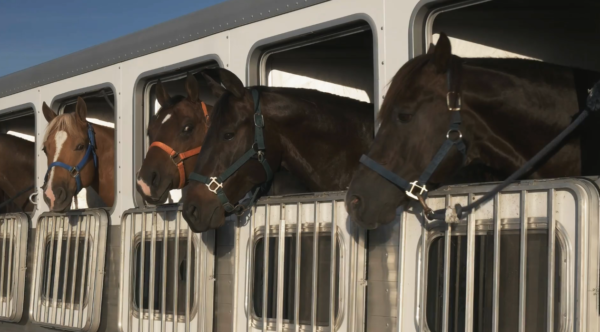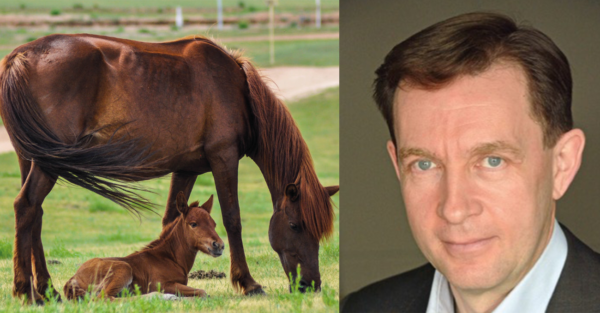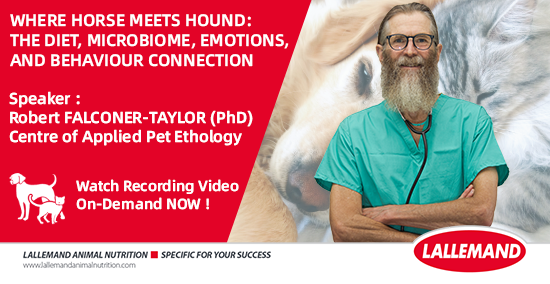Blog | Reading Time 4 minutes
Tackling horse oxidative stress to support joint and muscle health
This article is focusing on the second topic of the Lallemand seminar dedicated to companion animal microbiome and welfare: oxidative stress, its implication in joint and muscle health, and antioxidant supplementation.
What is oxidative stress?
Oxidative stress results from an imbalance between the production of reactive oxygen species (ROS), of which free radicals are the most powerful, and their consumption or transformation by endogenous antioxidant pathways: the antioxidant defenses. It is important to keep in mind that the formation of ROS is a normal physiological process: ROS exert some necessary cell functions and cell signaling such as apoptosis, as well as important roles in the immune system. Modern animal production conditions are sources of high oxidative stress, as the balance is tilted between excessive ROS formation and endogenous defense mechanisms.
Oxidative stress has been recognized to be involved in the pathogenesis and development of many diseases and is a particular concern in aging and challenged animals, such as athlete horses.
Dietary antioxidant supplementation is recommended to reduce the risk of oxidative damage and its associated problems.
The antioxidants pyramid
When it comes to antioxidant supplementation, it is important to differentiate primary and secondary antioxidants, as illustrated by the antioxidants pyramid (Figure 1):
- At the tip of the pyramid, are the primary antioxidants. These are enzymes able to control free radical production at the source. They detoxify and recycle ROS before they can damage the cells (e.g.: superoxide dismutase, glutathione peroxidase, catalase).
- Secondary antioxidants are molecules such as Vitamin E or C, polyphenols, etc. which inhibit free radicals and stop the “snowball effect” once main cell components (lipids, proteins, DNA) have been attacked and transformed into secondary free radicals.
While primary antioxidant enzymes act upstream of the oxidative cascades, secondary antioxidant molecules act lower in the pyramid and in a stoichiometric way (one antioxidant molecule inhibits one free radical).
The recommendation for an optimal antioxidant strategy is to combine primary and secondary antioxidant molecules in order to target several steps in the oxidative pathway and to obtain a synergistic effect.
One valuable source of primary antioxidants is the supplement MELOFEED, a dried melon juice produced from a specific melon variety, which is naturally rich in the antioxidant enzyme superoxide dismutase (SOD). It acts by stimulating specific receptors in the intestinal wall that are initiating the endogenous production of primary antioxidants (SOD, as well as GPx, CAT), as demonstrated in several animal species, in several organs.
Dr. Michael Lindinger, President of the Nutraceutical Alliance in Canada, designs nutraceutical supplements for companion animals. He agrees with the power of enzymatic primary antioxidants. This is what motivated him to conduct a trial with Melofeed in horses. Intense exercise is an important source of stress for athlete horses. Excess free radicals damage muscle cells, and as Lindinger showed, this stress can spread beyond the muscle to other organs, including the lungs for instance. Joints are not spared by oxidative stress and joint health is a central issue for exercising animals (horses or dogs). Excessive exercise can lead to joint inflammation and long-term damage. The objective of designing antioxidant nutraceuticals for exercising animals is to prevent excessive free radical production in exercise, to avoid inflammation instead of referring to anti-inflammatory drugs when the damage is done. Convinced by the potential of Melofeed to increase endogenous SOD, he used high doses of the supplement in exercising horses. Melofeed helps alleviate oxidative stress as well as muscle and joint inflammation and damage as shown by various biomarkers, an effect he qualifies as remarkable, even though he agrees much more research should be conducted into the mode of action.
The range of natural antioxidants (MELOFEED, but also ALKOSEL a source of bioavailable selenium) developed by Lallemand Animal Nutrition has a true potential to reinforce the natural defenses of horses and prevent oxidative stress.
Published Nov 27, 2023 | Updated Feb 1, 2024
Related articles
Need specific information?
Talk to an expert



